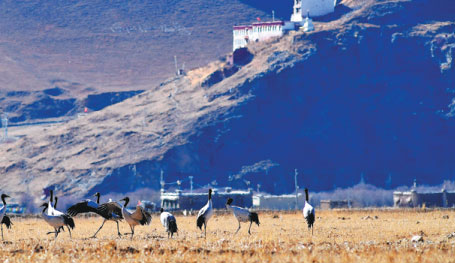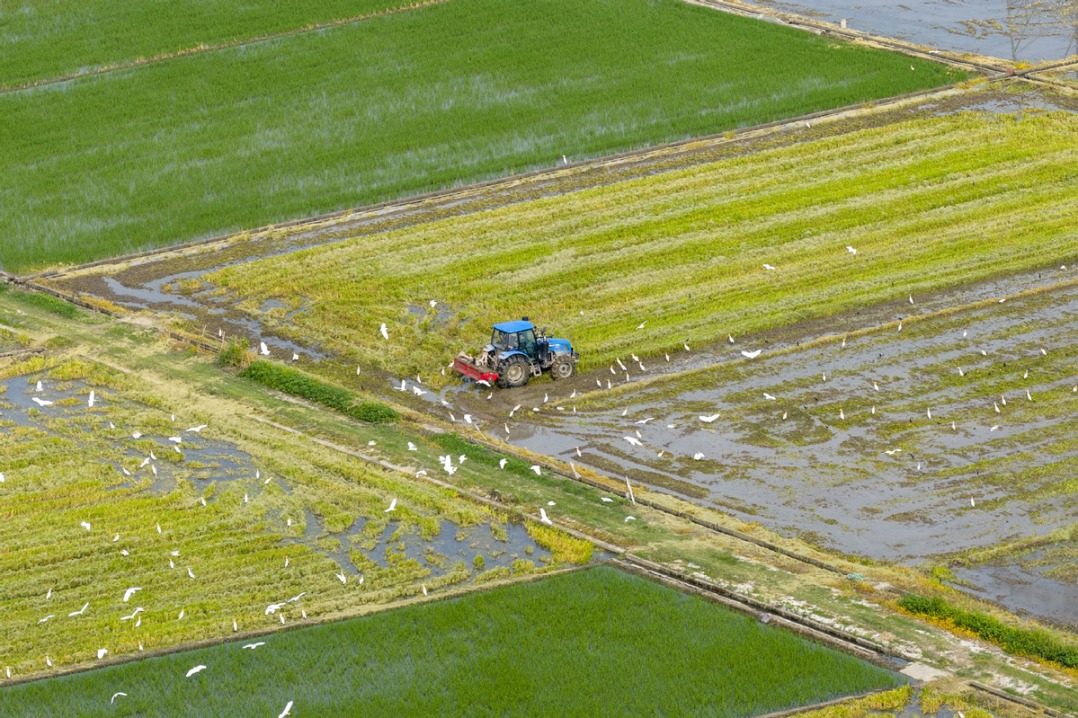Black-necked cranes welcomed in Tibet


Every winter, black-necked cranes arrive in the Tibet autonomous region, where they are welcomed by locals and tourists.
"This is the only time of the year when we can see flocks of these birds. It's spectacular!" said Toinzhub Cering, a wildlife ranger in Lhundrup county, which is about 140 kilometers northeast of Tibet's capital Lhasa.
Black-necked cranes are often seen in Tibet's river valleys and in the region's barley and wheat fields during winter - and Toinzhub Cering knows exactly where to find them. For 10 years, the 42-year-old has patrolled the nature reserve in Lhundrup, one of the black-necked cranes' major habitats.
With a population estimated at 10,200, the species is classified as "vulnerable" by the International Union for Conservation of Nature and is listed among more than 90 endangered species on China's top protection list, along with the giant panda and golden monkey.
The black-necked crane is the most recently identified of the 15 kinds of cranes worldwide. They are also the only kind that inhabits plateau areas at altitudes between 2,500 and 5,000 meters.
Toinzhub Cering is passionate about protecting the species, and has been doing his part to help. He is always the first person to call the media and the authorities every year when the rare birds arrive and depart. Now that he has learned to use social media, he often shares photos of the cranes with his friends.
Thanks to the efforts of local residents and the authorities, the exhausted birds don't have to face hunger, pesticide or poachers after flying over 1,000 km. Instead, the cranes can easily find pollutant-free highland barley and wheat left by farmers.
Efforts to protect endangered animals in Tibet cover more than birds, with the Tibetan antelope also among those under watch. When the cranes damage pasture, causing economic losses, residents can claim compensation from the government.
Between mid-March and late April, black-necked cranes migrate to northern Tibet to reproduce in lakeside marshes, far beyond human reach. But some wounded birds are left behind by the flock.
Xinhua
- Xizang's large-scale green project takes root
- Focus on combat: Competition of top snipers from 20+ countries
- Beijing's live houses drive cultural consumption
- Hangzhou-Wenzhou rail debuts summer innovations
- Oxford Professor: China's holistic ecological civilization underestimated
- China's agriculture and rural economy shows robust growth in H1





































